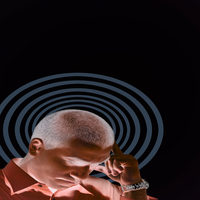Cluster Headache

There are dozens of types of headache, but one of the most serious and debilitating is called “cluster headache.”
It is a very severe headaches of a piercing quality that most often occurs near one eye or temple. The pain typically lasts for fifteen minutes to three hours. The headaches are usually
unilateral and occasionally change sides.
It is difficult to overstate the severity of the pain. I once mentioned that I could always tell if there was someone in the clinic experiencing a cluster headache because everyone could hear him banging his head against the wall to try and get some relief. They may also be described as “suicide headaches:” a reference to the
excruciating pain and resulting desperation that has culminated in
actual suicide.
There are some odd symptoms that may accompany the headache, such as:
- Stuffy or runny nose in the nostril on the affected side of the face
- Red, flushed face again on the side of the headache
- Swelling around the eye on the affected side of the face
- Reduced pupil size
- Drooping eyelid
As the name implies, cluster headache usually comes in clusters that last for a week or two or as long as two months. In about 10-15% of people they are chronic. The periodicity of the clusters is remarkable and has lead many of us to speculate an involvement of the brain’s “biological clock” or circadian rhythm. In an observational study we found that clusters were more likely to begin in the month of birth of the sufferer, though we never knew how much to read into this.
Cluster headache is far more common in tall men: most are over six feet tall. When we first described cluster headache in women in the early 1980s it was a rarity, though more women have been getting cluster headache in recent years: we have no idea why. Some years ago we also described that they were more common in men who smoked heavily and drove more than 15,000 miles each year. It was impossible to say whether the smoking was cause or effect. Cluster headache is, along with diabetes and multiple sclerosis, an illness that becomes more common in peple who live far from the equator.
We and others also found that nitrates could trigger episodes in some people: that first came to light when we saw three men who used them during sex.
Cluster headaches are most likely to be due to an abnormality in the hypothalamus, which could explain why cluster headaches frequently strike around the
same time each day, and during a particular season, since one of the
functions the hypothalamus performs is regulation of the biological clock and the metabolic abnormalities that have been reported in some patients.
During the onset of a cluster headache, the most rapid abortive treatment is the inhalation of pure oxygen (12-15 litres per minute in a non-rebreathing apparatus). When used at the onset of headache this can abort the attack in as little as 5
minutes. Once an attack is at its peak, using oxygen therapy appears to
have little effect. Alternative first-line treatment is subcutaneous
administration of triptansumatriptan and zolmitriptan. Because of the rapid onset of an attack, the triptan drugs are usually taken by subcutaneous injection
rather than by mouth. While available as a nasal spray, it had been thought that the spray would not be effective to sufferers of cluster headache due to the swelling
of the nasal passages during an attack. However new research from London has shown that 5-mg and 10-mg doses of zolmitriptan intranasal spray are effective within 30 minutes and well tolerated in the treatment of acute cluster headache.
Lidocaine (or any topical anesthetic) sprayed into the nasal cavity may relieve or stop the pain, normally in just a few minutes, but long term use is not suggested due to
the side effects and possible damage to the nose and sinuses.
Previously vaso-constrictors such as ergot
compounds were also used though less so now becuase of their side effects and new options being available. Oddly enough some sufferers report a similar relief by
taking strong cups of coffee immediately at the onset of an attack.
Many different types of prophylaxis have been tried, with lithium, the calcium channel blocker verapamil at a dose of at least 240mg daily, and the anticonvulsant topiramate.
Now a new report in the journal Neurology suggests that 22 out of 26 people with cluster headache who used psilocybin reported that the drg aborted their attacks. 25 of 48 psilocybin users and 7 of 8 LSD users reported cluster period termination; 18 of 19 psilocybin users and 4 of 5 LSD users reported remission period extension. The authors conclude that research on the effects of psilocybin and LSD on cluster headache may be warranted.
From what we do understand about the pathogenesis of cluster headache it is not difficult to see how psilocybin and LSD may help. But it did worry me that this report might lead to people self-medicating with hallucinogens without any kind of support or guidance.
That being said, this recent report shows once again the importance of listening to what people have to say: they often have the answers inside of them. And those answers may lead to a new range of treatments.






